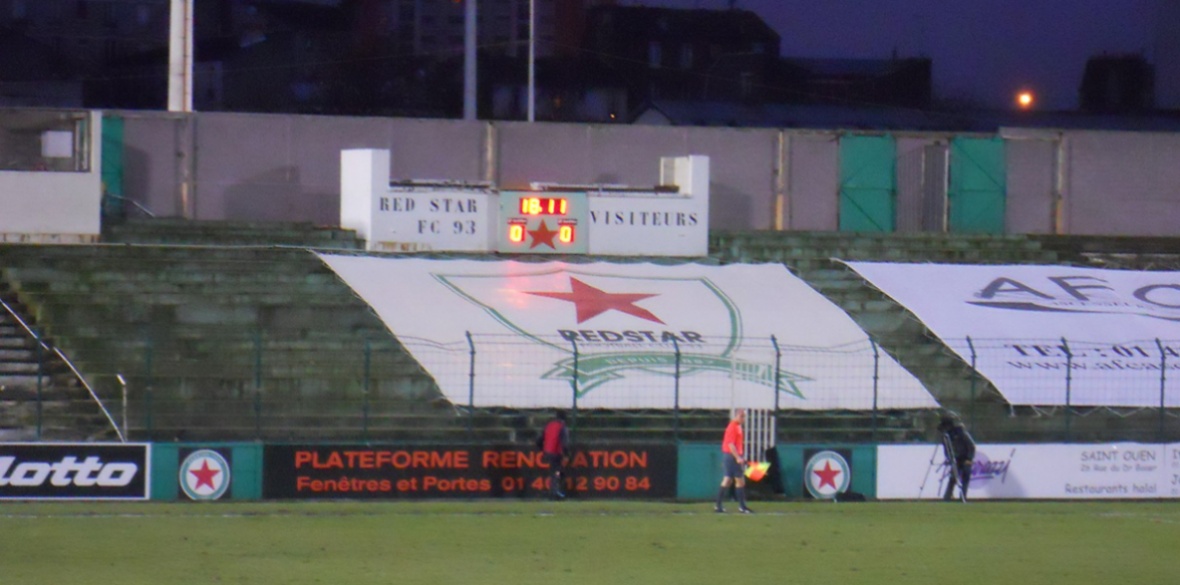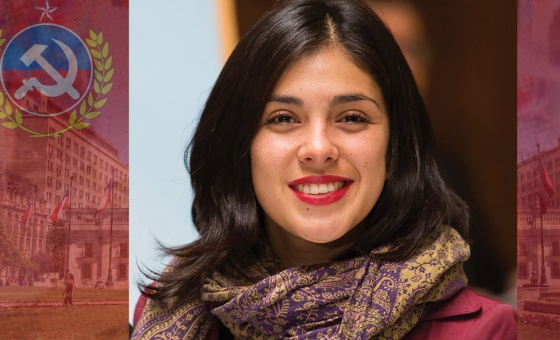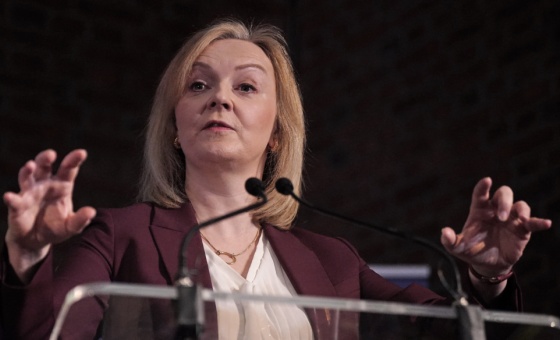This is the last article you can read this month
You can read more article this month
You can read more articles this month
Sorry your limit is up for this month
Reset on:
Please help support the Morning Star by subscribing here
WHEN people think of football in Paris, they tend to think of Paris St Germain, with its Eiffel Tower badge on a shirt that’s in almost every sports and souvenir shop in the world.
Of Zlatan Ibrahimovic, David Beckham, Kylian Mbappe, Edinson Cavani, Angel Di Maria and their Brazilian glamour boy Neymar, bought for an obscene £200 million from Barcelona.
But there is another football club in Paris — Red Star FC — a football club with history and integrity behind it. It’s modest, but loyal supporters represent a club and fanbase with principles, even if they now ply their trade in the Championnat National, the third-tier of French football.
Unlike PSG, Red Star are not bankrolled by the Qatari royal family. They are not financed to a degree that wrecks any semblance of competition in the French game. Red Star represent Saint-Ouen, the racially diverse banlieue working-class neighbourhood they play in.
Saint-Ouen is part of the Seine-Saint-Denis department of greater Paris; often referred to by its administrative number, quatre vingt treize (93). Around 26.5 per cent of the population are immigrants, by far the largest proportion of any Parisian district. Red Star reflect and embrace this diversity. Many of the fans are left-wing and actively anti-fascist.
There are only six miles between the two clubs, but in every other respect, they are light years apart. You could be forgiven for thinking that PSG is the one with the noble past, but you’d be wrong. They were only founded in 1970 and only became regulars at Europe’s top table once Qatari Sports Investment bought them in 2011 and turned them into a football Disneyland.
Red Star’s story begins in 1897, making them the second oldest football club in France after Le Havre. Founded by one of the most venerable names in French football, Jules Rimet, they had won the Coupe de France five times before PSG was even a twinkle in a billionaire’s investment fund.
Rimet, who lent his name to the original World Cup Trophy, was president of Fifa for 33 years, from 1921-1954, and was one of football’s great visionaries. His father was a grocer who brought his family to Paris when Jules was 11.
At 24, he formed Red Star, a club which, in accordance with Rimet’s ideals, did not discriminate against its members on the basis of class, a principle the club still honours today.
Red Star moved to their current home, the Stade de Paris, better known as the Stade Bauer, in 1909. From 1920 to 1934, they won the French Cup four times, secured professional status and became founding members of Ligue 1, France’s top flight.
The connection to the left-wing is not a new look for Red Star. Indeed, it was cemented during the second world war.
Rino Della Negra, the son of Italian immigrants, had signed for what was then Paris’s flagship club, but before he could even play a competitive match for the club, he was wounded and captured by the Nazis during an operation by the French Resistance.
He belonged to the Manouchian Group, the most active resistance unit in Paris. Named after their commander, the French-Armenian poet, Resistance hero and communist activist Missak Manouchian, the group were a sub-group of the FTP-MOI (Francs-tireurs et partisans — main-d’œuvre immigree), an immigrant outfit fighting for France.
They formed a network of communist freedom fighters who carried out attacks on Nazi targets. Prior to his execution, his final message to his brother read: “Hello and goodbye to Red Star.” He was 20 years old.
His sacrifice remains hugely symbolic to Red Star fans. His brother, Sylvain Della Negra was there to see the club unveil a plaque to his memory in 2004.
The post-war years were bleak ones for Red Star. Although they mostly bobbed between Ligue 2 and the third tier, they would occasionally reach the heights of Ligue 1, albeit briefly. Their last season in the top flight was 1974-75.
This century saw them almost go bust in 2003 before they reached the nadir of their existence — the sixth tier of French football, between 2003-2005. Since then they have revived, winning promotion to Ligue 2 in 2014-15 before last season’s relegation.
Patrice Haddad, a film director and the club’s president since 2008, has big plans for the club and their crumbling stadium. Fans rejected his idea for a €200 million (£179m) development of Stade Bauer into a sports and entertainment centre, but they remain broadly in support of his efforts to place Red Star at the centre of the community. “I want Red Star and Stade Bauer to become a social and economic lung of [Saint-Ouen],” he said.
Even if attendances are between 1,000 and 2,000, Red Star still has a number of ultra groups, such as Gang Green, Perry Boys and the Splif Brothers. They have friendships with Red Kaos at Grenoble and while they may be among the most chilled of ultras, they have a fierce rivalry with a third club in the City of Love, Paris FC.
Politics in Parisian football is incredibly confused and confusing. Paris St Germain used to have a raucous atmosphere at the Parc des Princes as one end of the stadium, the Kop of Boulogne, was populated by right-wing ultras, the Boulogne Boys and the other by left-wing ultra group, the Virage Auteuil. Both made a ferocious noise.
The Kop of Boulogne could be viciously racist, with one group, Casual Firm, even abusing their own players, such as George Weah, the former Fifa World Player of the Year and current President of Liberia.
Despite his outstanding contribution to PSG’s success in the ’90s, he was subjected to monkey taunts and neonazi symbols at his last game for a club he had served with distinction.
So how did the two opposing ultra groups get on? They didn’t. There was fighting at every game and, once a supporter was killed outside the stadium in 2010, both groups were banned, though they were allowed to return in restricted form from 2016.
But while PSG has taken all the glory, with its oil money attracting some of the world’s best footballers, Red Star has also grown some of its own stars, including Abou Diaby, Moussa Sissoko and Steve Marlet.
The former Manchester United player, David Bellion, also played for L’Etoile rouge but is now Red Star’s creative director, running fantastic workshops for local youth.
He told the Guardian: “Red Star is an underground, romantic, popular football club where there is absolutely no social status. People love it because it still has that old-school football vibe. The club was not built for just victory and winning. It is a very powerful symbol of freedom and creativity. We don’t try to be alternative, we are just expressing who we are. We’re a football club based on respect, love, humility and diversity.”
The fans remain politically engaged, but they also cheer the team through thick and thin, and let’s face it, it’s mostly thin.
While Haddad tries to obtain planning and funding for a new stadium to secure the future of the club, the fans will go on supporting, win or lose. They don’t need to buy championships, marquee signings or celebrity footballers. They just need a red star, on a green shirt, and a club that means something, that represents their values, that reflects their belief in a fairer world.












